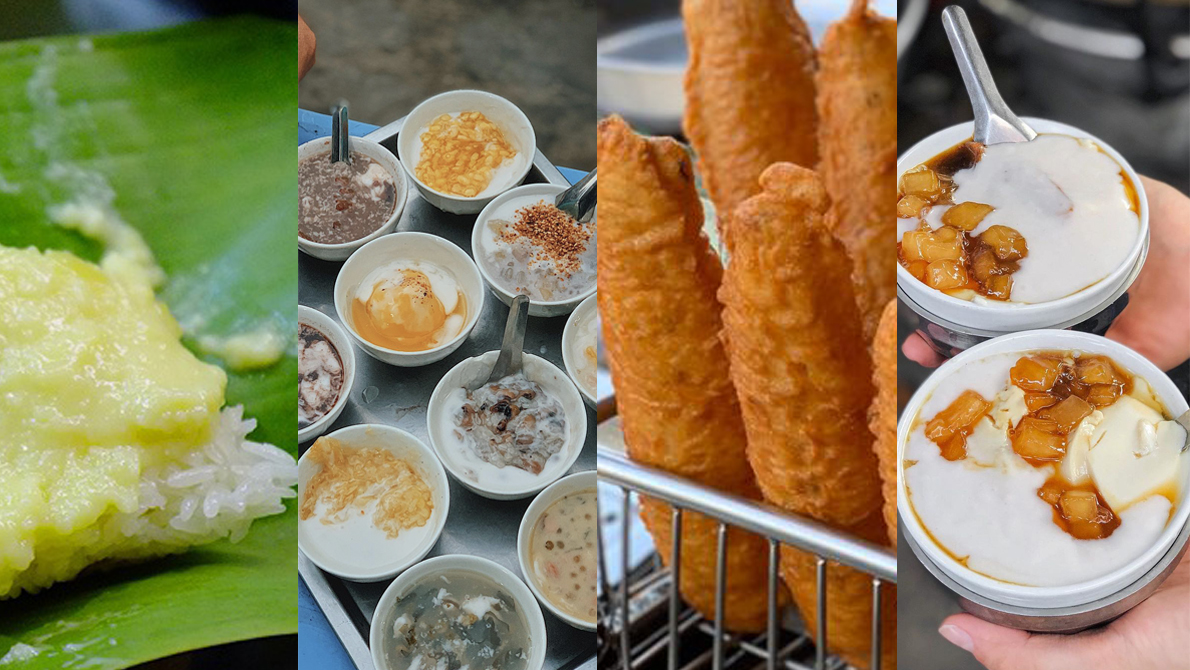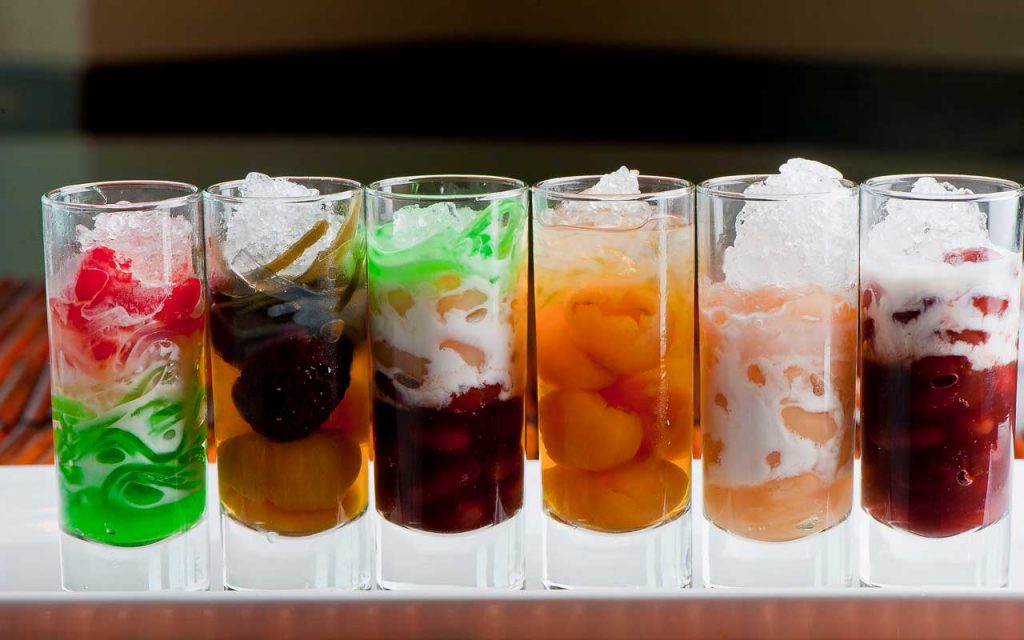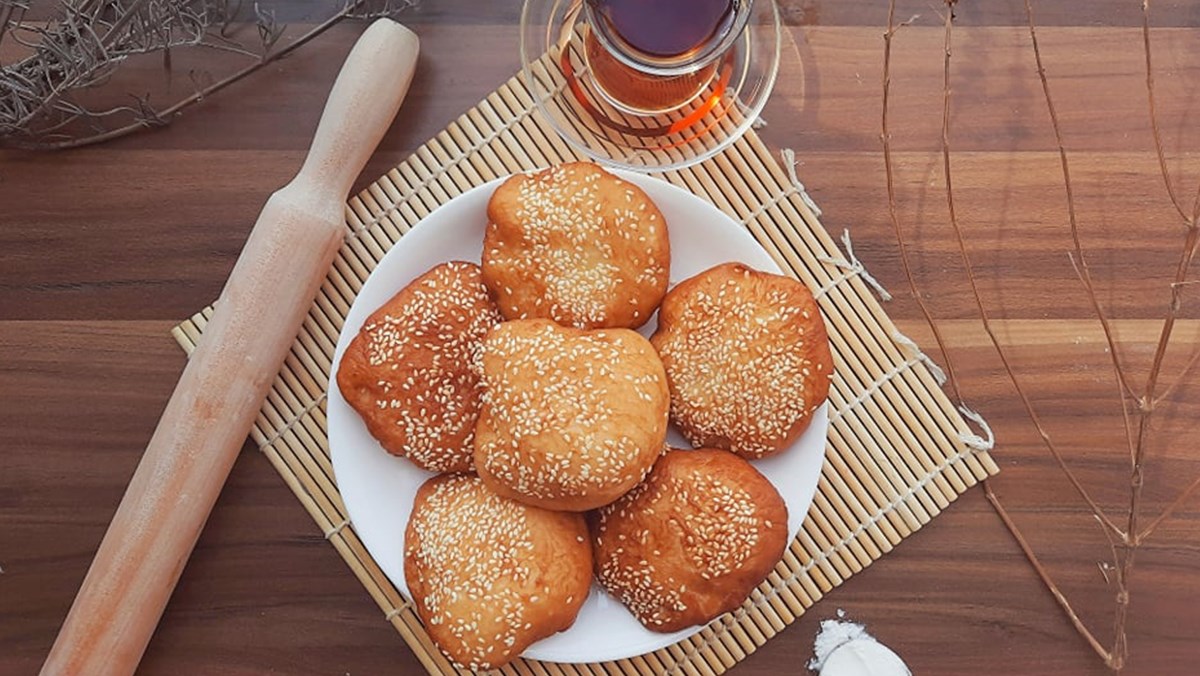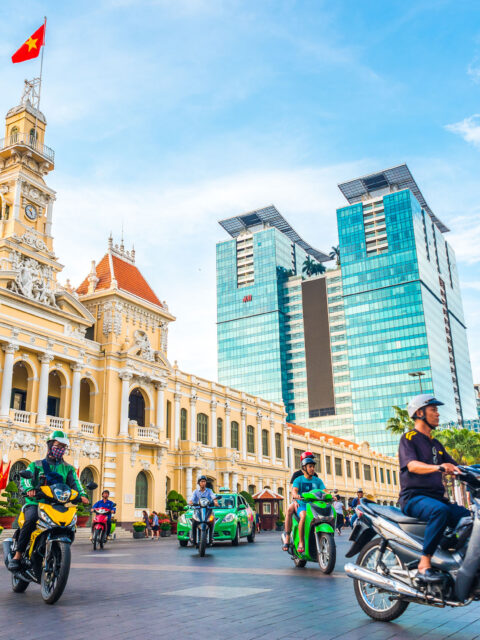Welcome to the delightful world of Vietnamese desserts, where each sweet treat is a harmonious blend of flavors, textures, and cultural influences. From the bustling streets of Hanoi to the serene Mekong Delta, Vietnam boasts a rich tapestry of desserts that reflect its diverse cultural influences. In this article, we’re here to be your culinary companion, offering a down-to-earth exploration of Vietnam’s sweet treats that you can easily replicate in your own kitchen.
As we delve into the world of Vietnamese desserts, we’ll not only tantalize your senses with delightful flavors but also provide practical insights on the ingredients and techniques essential to mastering these treats. Our guide is crafted to be as helpful as your next-door neighbor sharing their cherished family recipes. So, grab a spoon, prepare your sweet tooth, and join us on this flavorful adventure through the delightful realm of Vietnamese desserts.
Explore the top 10 Vietnamese street food picks with our guide!
Top 10 Vietnamese Desserts
Vietnamese desserts are a delicious and fascinating part of Vietnamese cuisine. They offer a unique and flavorful experience that is sure to please everyone’s palate. Here is a list of the top 10 Vietnamese desserts that you and your sweet tooth must try during your visit:

1. Che
Che (Vietnamese sweet soups) is a classic Vietnamese dessert that is made with a variety of ingredients, such as beans, sweet potato, tubers, glutinous rice, and fruits. It is often served with rich coconut cream or cream and is a popular treat on hot days.
Che is believed to have originated in the central region of Vietnam, but it is now enjoyed throughout the country. There are many different types of che, and each region has its own unique variations.
Some of the most popular types of che include:
- Che ba mau (three-color sweet soup): This dessert is made with three different colored jellies: green pandan jelly, white coconut jelly, and red bean jelly.
- Che dau xanh (mung bean sweet soup): This dessert is made with mung bean, sugar, and coconut cream. It is often served with crushed ice, tapioca pearls, or sago balls.
Che can be enjoyed as a snack, dessert, or even a light meal. It is a healthy and refreshing way to cool down on a hot day. Here are some tips for eating che:
- Che is typically served in a bowl with a spoon. You can eat it on its own or add your own toppings, such as fresh fruit, nuts, or white sesame seeds.
- Che can be enjoyed hot or cold. If you are eating it hot, be sure to let it cool down slightly before eating to avoid burning your mouth.
There are many different variations of che in different regions of Vietnam. For example, in the south of Vietnam, che is often made with creamy coconut sauce, and more tropical fruits, such as mango, jackfruit, and durian. In the north of Vietnam, sweet soups are often made with more temperate fruits, such as apples, pears, and grapes.

2. Banh Flan
Banh flan (Vietnamese crème caramel) is a popular dessert in Vietnam and is especially popular among children. The dessert is made with a simple custard mixture that is poured into ramekins and steamed until cooked through. The caramel sauce is made by melting sugar in a saucepan until it turns a deep amber color. The caramel sauce is then poured into the ramekins on top of the custard. The dessert is usually served chilled and is often topped with fresh fruit or a dollop of whipped cream.
Banh flan is believed to have been introduced to Vietnam by the French during the colonial period. The Vietnamese dessert is thought to be a variation of the French crème caramel, but it has been adapted to Vietnamese tastes. For example, Vietnamese banh flan is often made with coconut cream instead of whole milk and is served with fresh fruit, such as mango or dragon fruit.
Banh flan is a popular dessert in Vietnam because it is delicious, easy to make, and relatively inexpensive. It is also a versatile dessert that can be enjoyed on its own or as part of a larger meal.
Here are some tips for eating banh flan:
- Banh flan is typically served in a ramekin with a spoon. You can eat it on its own or add your own toppings, such as fresh fruit, whipped cream, or nuts.
- If you are eating banh flan with whipped cream, be sure to spoon it onto the top of the dessert just before eating. This will help to prevent the whipped cream from melting.
- Banh flan can be enjoyed hot or cold. But if you want to try it cold, please remember to add some crushed ice and coffee to this Vietnamese dessert.
There are many different variations of banh flan in different regions of Vietnam. In the north of Vietnam, banh flan is often made with condensed milk and is served with a simple caramel sauce. In the central region of Vietnam, banh flan is often made with coconut cream and served with a variety of toppings, such as fresh fruit, nuts, and seeds.

3. Banh Chuoi
Banh chuoi (banana cake) is a popular Vietnamese dessert made with bananas, sugar, and coconut milk. It is a simple Vietnamese dessert that is easy to make and can be enjoyed by people of all ages.
Banh chuoi is made by mashing ripe bananas and mixing them with sugar and coconut milk. The mixture is then poured into a greased pan and baked until golden brown. Banh chuoi can be served warm or cold and is often topped with grated coconut or roasted peanuts.
There are many different variations of banh chuoi in different regions of Vietnam. In the north of Vietnam, banh chuoi is often made with condensed milk and is served with a simple caramel sauce. In the central region of Vietnam, banh chuoi is often made with pandan leaves for a more flavorful and aromatic dessert.

4. Com
Com (young sticky rice) is a traditional Vietnamese ingredient made from immature glutinous rice grains. It is harvested in the fall when the rice is still green and tender. The rice grains are then roasted and pounded into a fine powder.
Com has a unique flavor and texture that is unlike any other type of rice. It is slightly sweet and nutty, with a chewy texture. Com can be eaten on its own, but it is also used to make a variety of delicious Vietnamese food, such as banh com (young sticky rice cake) and che com (young sticky rice sweet soup).
Com is a popular ingredient in Vietnamese cuisine because it is delicious, versatile, and nutritious. It is a good source of carbohydrates, protein, and fiber. Com is also low in fat and calories.

5. Xoi Gac
Xoi gac (Vietnamese sticky rice with red gấc fruit) is a popular Vietnamese dessert that is especially popular during the Tet (Lunar New Year) holiday. It is made with glutinous rice, coconut cream, and gấc fruit. Gấc fruit is a type of gourd that is native to Southeast Asia. It has a bright red flesh and contains a high amount of beta-carotene, which is a powerful antioxidant.
To make xoi gac, the rice is first soaked in water overnight. The next day, the rice is cooked with coconut milk and gấc flesh. The rice is then steamed until cooked through. Xoi gac is typically served with grated coconut and delicious mung bean paste.
Xoi gac is a popular dessert in Vietnam because it is delicious, nutritious, and has a symbolic meaning. The red color of the gấc fruit is associated with good luck and prosperity. Xoi gac is often served during the Tet holiday to bring good luck and fortune to the family for the coming year.
Here are some tips for eating xoi gac:
- Xoi gac is typically served warm or at room temperature.
- You can eat it on its own or add your own toppings, such as shredded coconut, mung bean paste, or fresh fruit.
- If you are eating xoi gac with mung bean paste, be sure to spoon it onto the top of the dessert just before eating. This will help to prevent the paste from drying out.
There are many different variations of xoi gac in different regions of Vietnam. In the north of Vietnam, xoi gac is often made with turmeric. In the central region of Vietnam, xoi gac is often made with both pandan leaves and turmeric.

6. Banh Dau Xanh
Banh dau xanh (Vietnamese mung bean cake) is a popular Vietnamese dessert that is made with mung bean, sugar, and coconut milk. It is a dense and chewy cake that is often served with tea or coffee.
To make banh dau xanh, the mung beans are first soaked in water overnight. The next day, the beans are cooked until soft. The cooked beans are then mashed and mixed with sugar and coconut milk. The mixture is then shaped into a cake and baked until golden brown.
Banh dau xanh is a popular dessert in Vietnam because it is delicious, affordable, and easy to make. It is a popular snack or dessert that is often served at home or in restaurants.
There are many different variations of banh dau xanh in different regions of Vietnam. For example, in the south of Vietnam, banh dau xanh is often made with pandan leaves. In the north of Vietnam, banh dau xanh is often made with turmeric. In the central region of Vietnam, banh dau xanh is often made with a blend of black and white mung beans.

7. Banh Tieu
Banh tieu (Vietnamese doughnuts) are a popular Vietnamese snack that is made with a simple dough of flour, water, and yeast. The dough is then deep-fried until golden brown and puffy. Banh tieu is often served with a variety of toppings, such as sugar, cinnamon, or sesame seeds.
To make banh tieu, the flour is first mixed with water and yeast. The dough is then kneaded until it is smooth and elastic. The dough is then allowed to rise for about an hour. Once the dough has risen, it is rolled out into small circles. A hole is then punched in the center of each circle. The doughnuts are then deep-fried until they are golden brown and puffy.
Banh tieu are a popular snack in Vietnam because they are delicious, affordable, and easy to make. They are often sold by street vendors or in small shops.
There are many different variations of banh tieu in different regions of Vietnam. For example, in the south of Vietnam, banh tieu is often made with sweet dough and is served with sugar or cinnamon. In the north of Vietnam, banh tieu is often made with savory dough and is served with a variety of toppings, such as pork floss, sesame seeds, or scallions.

8. Tao Pho
Tao pho (also known as tào hu, dau hu non, or dau hoa) is a popular Vietnamese dessert made from fermented soybeans. It is a smooth, creamy pudding that is often served with a variety of toppings, such as sugar, ginger syrup, fruit, or jelly.
Tao pho is made by soaking soybeans overnight and then grinding them into a paste. The paste is then mixed with water and boiled until it curdles. The curds are then separated from the whey and cooled. Tao pho can be served hot or cold.
Tao pho is a popular dessert in Vietnam because it is delicious, affordable, and easy to make. It is often served as a snack or dessert at home or in restaurants.
There are many different variations of tao pho in different regions of Vietnam. For example, in the south of Vietnam, tao pho is often made with sweet ginger syrup and is served with fruit, such as bananas or mangoes. In the north of Vietnam, tao pho is often made with a savory broth and is served with ingredients, such as pork floss, peanuts, or scallions.

9. Banh Duc La Dua
Banh duc la dua (Vietnamese pandan rice cake) is a popular Vietnamese dessert that is made with glutinous rice flour, coconut milk, and pandan leaves. It is a soft and chewy cake that is often served with a variety of toppings, such as sugar, syrup, or fruit.
To make banh duc la dua, the rice flour is first mixed with water and pandan leaves to form a batter. The batter is then poured into a mold and steamed until cooked through. The cooked cake is then cut into small pieces and served with a variety of sweet and salty toppings.
Banh duc la dua is a popular dessert in Vietnam because it is delicious, affordable, and easy to make. It is often served as a snack or dessert at home or in restaurants.
There are many different variations of banh duc la dua in different regions of Vietnam. For example, in the south of Vietnam, banh duc la dua is often made with a sweet filling, such as coconut jam. In the north of Vietnam, banh duc la dua is often made with a savory filling, such as pork floss or peanuts.

10. Kem
Kem (Vietnamese ice cream) is a popular Vietnamese dessert that is made with condensed milk, cream, sugar, and flavorings. It is often served with a variety of toppings, such as fruit, nuts, or syrup.
Kem is a popular dessert in Vietnam because it is delicious, affordable, and easy to find. It is often sold by street vendors or in small shops.
There are many different variations of kem in different regions of Vietnam. For example, in the south of Vietnam, ice cream is often made with condensed milk for a sweeter flavor. In the north of Vietnam, kem is often made with coconut milk for a richer flavor.
No matter what region of Vietnam you are in, you are sure to find a type of ice cream that you will enjoy. Kem is a delicious and versatile dessert that is perfect for any occasion.

Ready For Your Favorite Vietnamese Desserts?
In wrapping up our exploration of the top 10 Vietnamese desserts, I hope this culinary journey has ignited your taste buds and inspired a newfound appreciation for the rich and diverse world of Vietnamese sweets. Vietnam’s dessert scene has something for every palate. As you embark on your own dessert adventures, don’t hesitate to experiment with these recipes or seek out local Vietnamese bakeries to savor these delectable treats firsthand.
Remember, the heart of Vietnamese desserts lies not only in the flavors but also in the stories and traditions passed down through generations. So, whether you’re enjoying these sweets with loved ones or savoring them solo, may each bite be a delightful connection to the warmth and hospitality of Vietnamese culture. Cheers to indulging in the sweet side of Vietnam!
Plan your hassle-free trip to Vietnam with e-Visa!
Let our extensive 10+ years of experience in visa services be your guiding light as you book with us, guaranteeing a smooth and worry-free trip to Vietnam!














